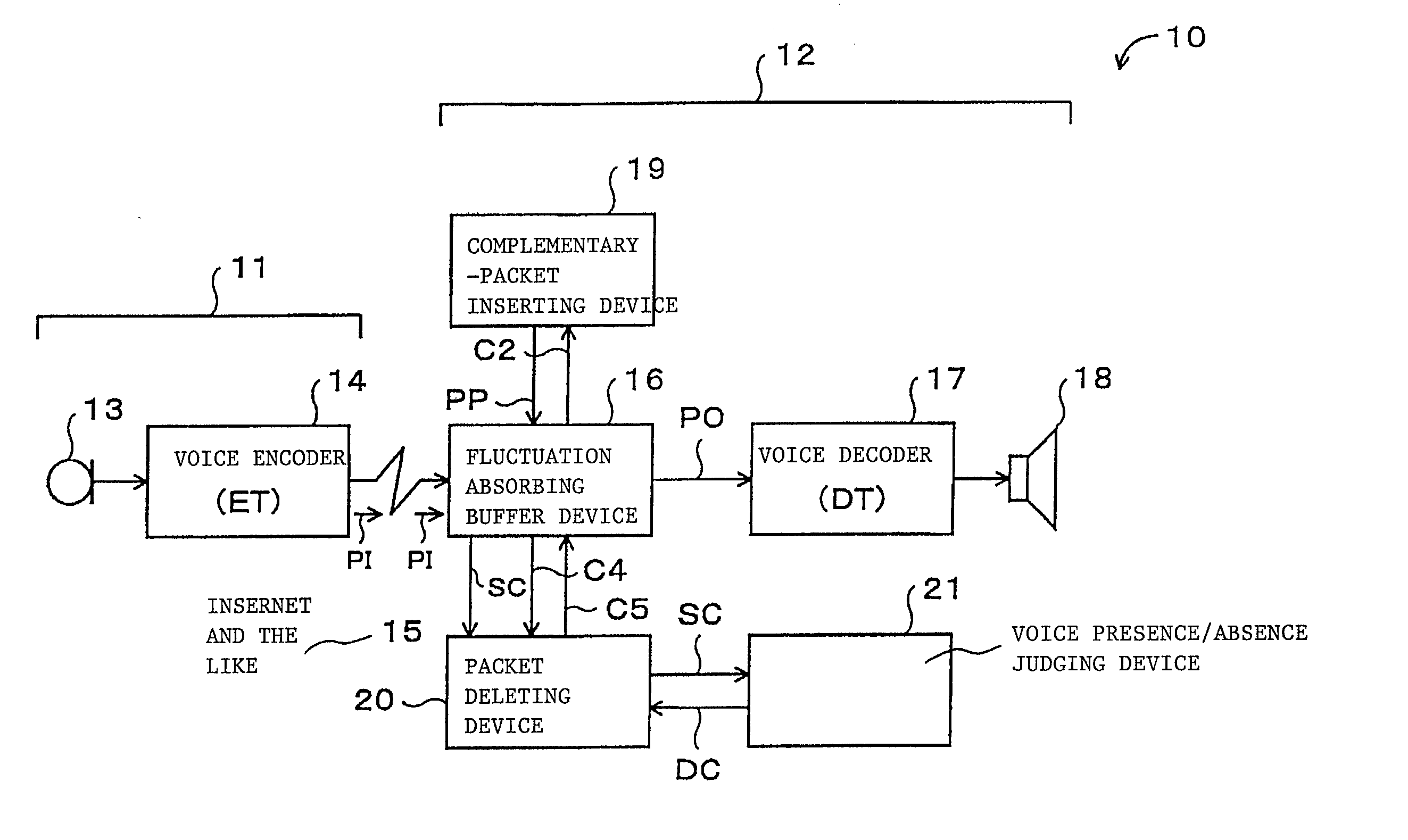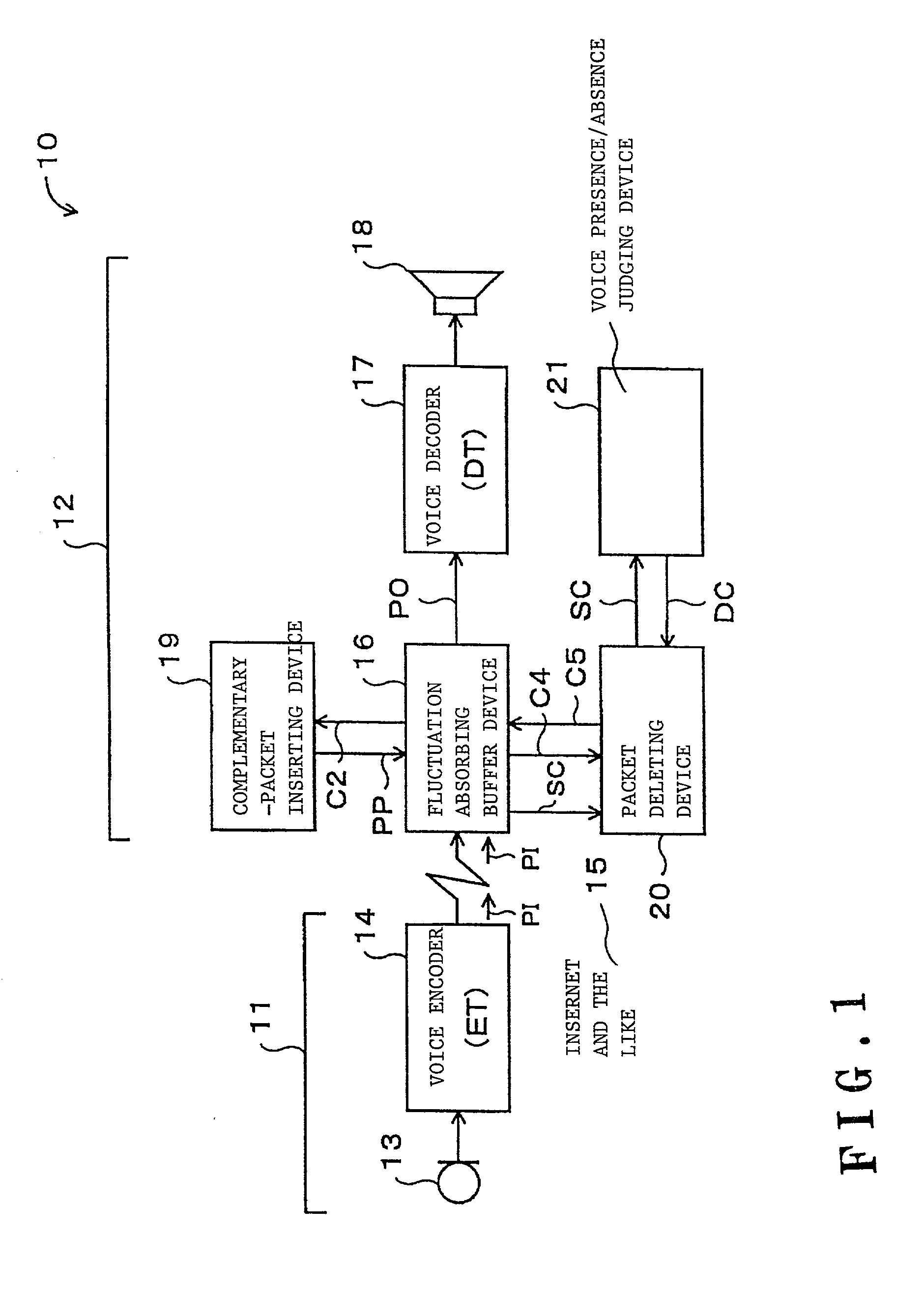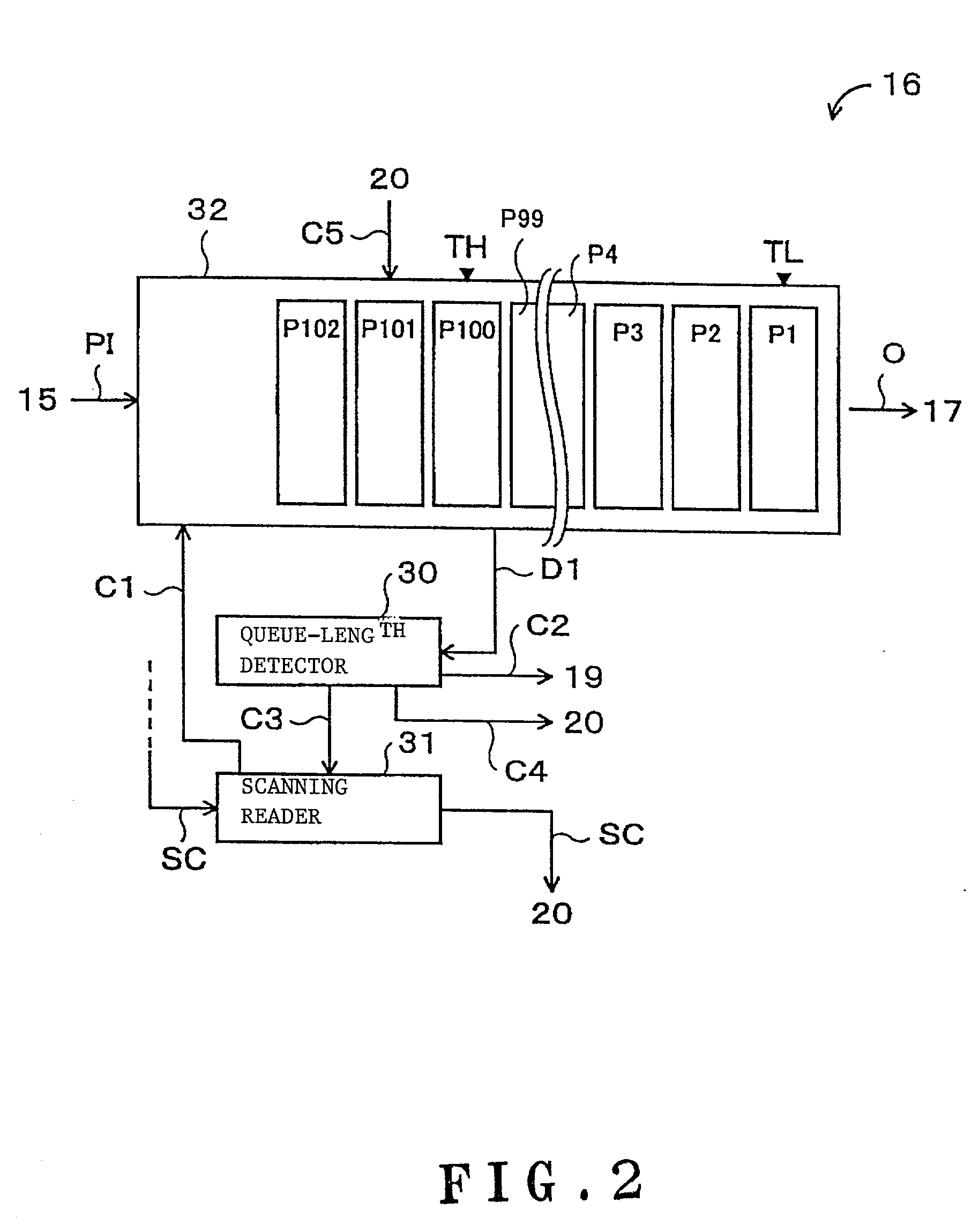Quality control device for voice packet communications
a quality control and packet communication technology, applied in data switching networks, frequency-division multiplexes, instruments, etc., can solve problems such as packet loss, packet loss, delay, and jitter
- Summary
- Abstract
- Description
- Claims
- Application Information
AI Technical Summary
Benefits of technology
Problems solved by technology
Method used
Image
Examples
second embodiment
[0112] (B) Second Embodiment
[0113] Only the difference between the first embodiment and the second embodiment will be described hereinafter.
[0114] (B-1) Structure and Operation of the Second Embodiment
[0115] FIG. 3 shows an internal structure of a fluctuation absorbing buffer device 46 provided instead of the fluctuation absorbing buffer device 16 of FIG. 2 in this embodiment.
[0116] The buffer device 46 is an element that corresponds to the buffer device 16 of the first embodiment, and the basic function thereof is the same as that of the buffer device 16.
[0117] The whole structure of a voice communications system 40 that includes a voice communications device 42 on the receiving side where the buffer device 46 is mounted is as shown in FIG. 8.
[0118] In other words, the structure of the voice communications system 40 of this embodiment is basically the same as that of the voice communications system 10 of the first embodiment shown in FIG. 1.
[0119] In FIG. 8, the voice communication...
third embodiment
[0146] (C) Third Embodiment
[0147] Only the difference between this embodiment and the first embodiment will be described hereinafter.
[0148] This difference is limited to the fact that the higher threshold (TH) fixed in the first embodiment can be dynamically changed.
[0149] (C-1) Structure and Operation of the Third Embodiment
[0150] A structure of a principal part of a voice communications system 60 of this embodiment is shown in FIG. 9.
[0151] In FIG. 9, the functions of each component and each signal, to which the same reference character as that of FIG. 1 is given, are the same as those of FIG. 1.
[0152] Therefore, in FIG. 9, the structure of the voice communications device 62 of this embodiment is different from that of the voice communications device 12 in that the device 62 has a microphone 63, a voice encoder 67, and a dual-talk detector 64, in the internal structure of a fluctuation absorbing buffer device 66.
[0153] Further, the voice communications device 61 of this embodiment...
fourth embodiment
[0173] (D) Fourth Embodiment
[0174] Only the difference between this embodiment and the first and third embodiments will be described hereinafter.
[0175] (D-1) Structure and Operation of the Fourth Embodiment
[0176] A structure of a principal part of the voice communications system 70 of this embodiment is shown in FIG. 11.
[0177] In FIG. 11, the functions of each component and each signal, to which the same reference characters as that of FIG. 9 are given, are the same as those of FIG. 9.
[0178] That is, the voice communications system 70 of this embodiment has a structure in which the dual-talk detector 64 in the voice communications device 62 of the voice communications system 60 of the third embodiment is substituted with a power-variation-difference computing unit 71 and a zero-crossing counter 72.
[0179] With this structure, in the third embodiment, the control signal C11 is changed in accordance with the analytic result of a conversation pattern that corresponds to the tendency of ...
PUM
 Login to View More
Login to View More Abstract
Description
Claims
Application Information
 Login to View More
Login to View More - R&D
- Intellectual Property
- Life Sciences
- Materials
- Tech Scout
- Unparalleled Data Quality
- Higher Quality Content
- 60% Fewer Hallucinations
Browse by: Latest US Patents, China's latest patents, Technical Efficacy Thesaurus, Application Domain, Technology Topic, Popular Technical Reports.
© 2025 PatSnap. All rights reserved.Legal|Privacy policy|Modern Slavery Act Transparency Statement|Sitemap|About US| Contact US: help@patsnap.com



